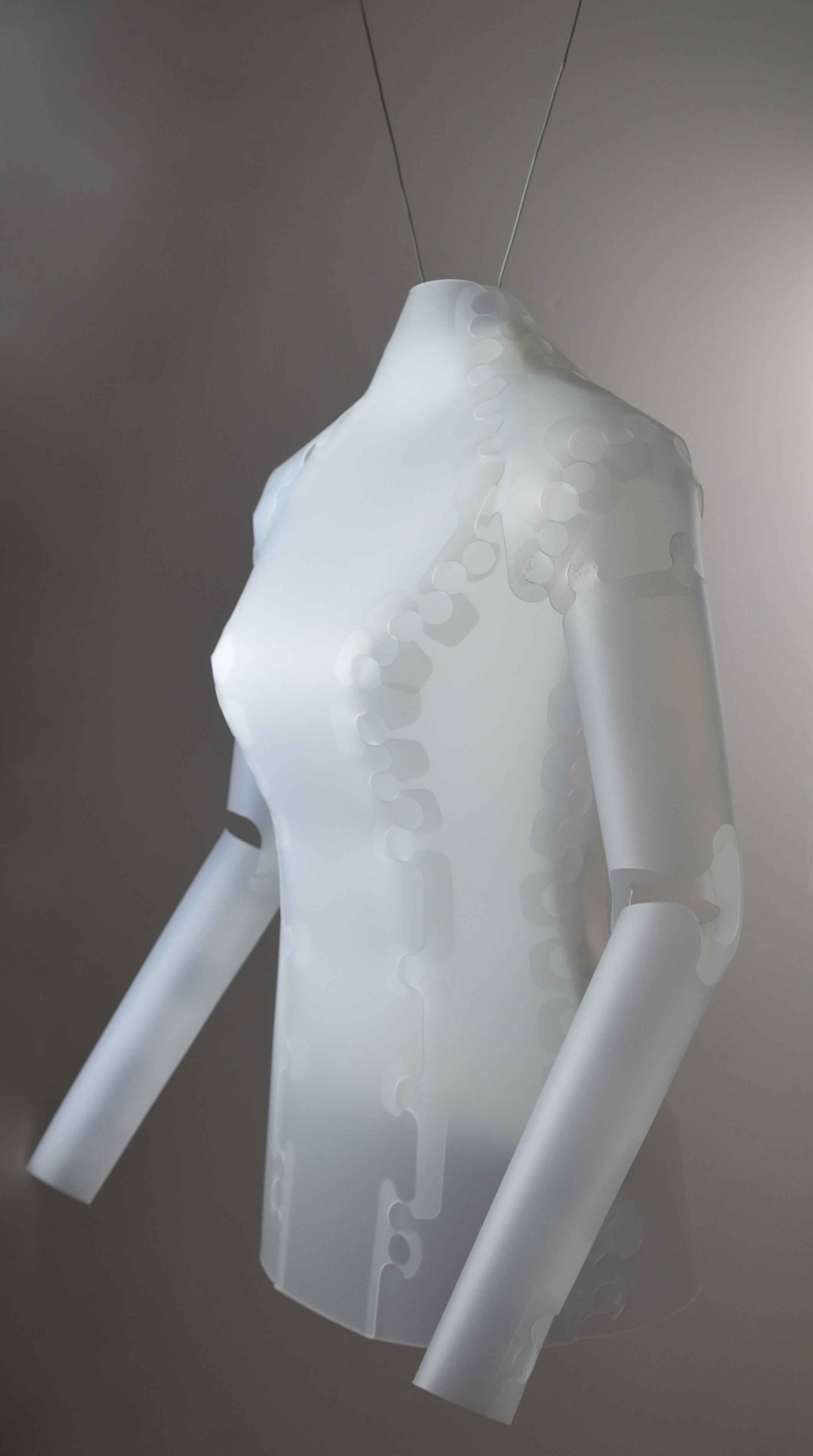Mannequino: Sustainable Fashion Without Compromise
Fashion for Good Museum, Amsterdam (Redress Design Awards).
With the world’s first circular mannequin design, Mannequino is the joint effort of Royal College of Art alumni, Kelly Sant and Arash Kaynama; both designers who have committed themselves to the cause of sustainable fashion. Transforming traditional mannequin design from a highly customised, unrecyclable, toxic, labour and material intensive industry, Mannequino is a smart, agile, modular, and resource-efficient fashion platform.
Female Mannequino with Arms, translucent.
Since its inception in 2014, the demand for Mannequino’s unique approach to mannequin design has been consistently high. Selected by the Global Fashion Agenda for the Copenhagen Fashion Summit, and championed by Amsterdam’s Fashion for Good Museum as the world’s first modular mannequin, Mannequino is now found on high streets across the globe, from London to Los Angeles. It works with many forward-thinking luxury, sportwear and heritage clothing brands, including Christopher Raeburn, Berghaus, Cordura, Rab, Deploy Workshop, Smart Wool, Ka De We, Gill, Napapijri, Patagonia, Levi Stress & Co., Canada Goose, Geox, Timberland, Lee, Rodd & Gunn, Rapha, Arc’Teryx, Cotswold Outdoor and Muji.
But what is it about Mannequino that has been so attractive to these companies? Well, in terms of assembly, storage, shipping, materials and design, Mannequino is like nothing else on the high street.
Ka De We, Germany (Givenchy on hanging Female Mannequino Bust).
Assembly
Mannequino’s patented design is comprised of flat-packed 2D panels which fit via a snap-lock system into a 3D form. The build mechanism is very intuitive and requires no tools, meaning the Mannequino
can be quickly assembled and deconstructed with little training required; see the video instructions to see just how easy the process is.
With modular parts, the Mannequino is available in various frame configurations and pairings, which allow it to become freestanding, light up internally, and to be hung and re-arranged easily.
Storage and Shipping
Courtesy of their flat-pack shape, Mannequinos are more affordable to ship than conventional mannequins, costing around a fraction of the price to courier. Whereas normal mannequins can weigh anywhere between 5 kg and 25 kg, the super-lightweight Mannequino weighs only 500 grams. This means it can be easily stored in shop stockrooms, moved around the shop floor, and transported between outlets. Coming with a compact carry case, Mannequino panels are robustly made, and can be frequently moved without fear of damaging them.
Female Mannequino with Arms, black.
Materials
Mannequino is made from polypropylene, which is a non-toxic, long-chain thermoplastic. It has a wide range of applications and there is a global network for recycling it. Using less than 80%-98% material of conventional mannequin designs, none of Mannequino’s parts, including any metal components, are printed, glued, laminated, painted or lacquered, which means the plastic and other component raw materials can be easily returned back into their high-value natural state and reused as if from new.
Additionally, because of polypropylene’s long molecular structure, there is little downcycling, meaning it can be recycled many times and not lose its characteristic properties.
This is part of Mannequino’s contribution to the circular economy, to eliminate harmful waste and operate within a closed loop of resources. Reducing its carbon footprint wherever
possible, Mannequino wants to instil this commitment throughout the fashion industry.
Design
Mannequino’s inert and passive form centres attention on the quality of the garments worn. Less is more in this regard, and its internal light, for which there are multiple offerings available
as part of its modular design, easily passes through the plastic and lets the clothes glow. The Mannequino is also built with moveable limbs for fine positioning.
Raeburn, London (RÆCYCLED Lightweight Jacket with internally lit Mannequino).
Mannequino’s Vision
Committed to fashion without compromise whilst minimising its impact on the environment, recently Mannequino has pivoted its facilities to produce a recyclable visor, the Invisvisor and mask, to help vulnerable communities shield in a more sustainable, long term fashion.
Mannequino’s high-speed factory is located at ARCC Innovations in South Cambridgeshire, from which 80% of Mannequinos are exported. Find out more about Mannequino’s unique approach to fashion on its website.
Napapijri (VF Corp) Infinity Jacket Launch from Futurewear Line, collaborates with Studio Xag in Kings Cross in partnership with Given London and photo courtesy of PR agency Present.






